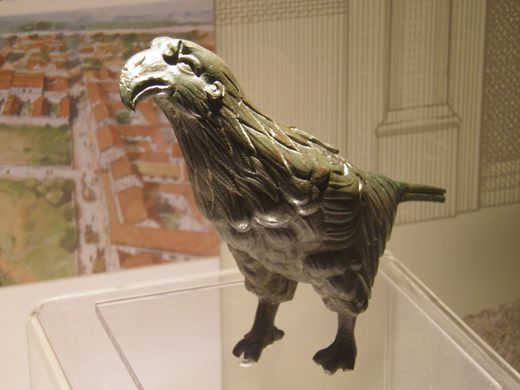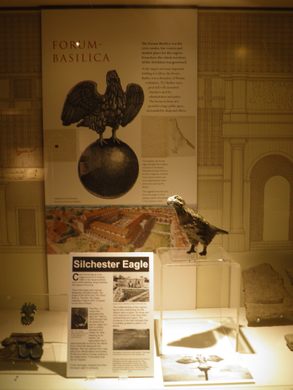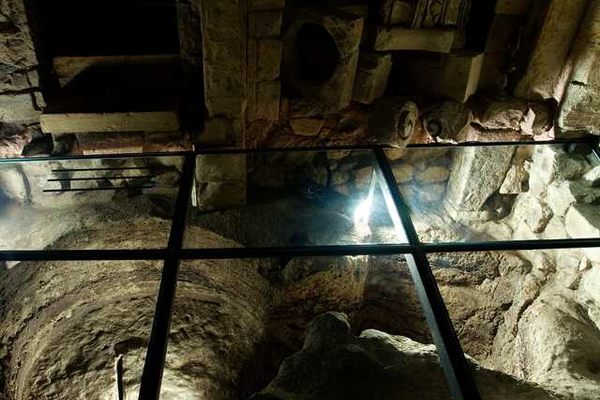Silchester Eagle
Once believed to be a sacred Roman legionary symbol, this bronze figure inspired the 1954 novel 'The Eagle of the Ninth.'
On October 9, 1866, Reverend J. G. Joyce discovered a bronze sculpture of an eagle during the excavation of a ruined Roman basilica at the Calleva Atrebatum site in Silchester, England. Damaged and wingless, it appeared to have once been part of a bigger statue.
As the artifact was found in a layer of charred wood, archaeologists theorized that it might have been one of the lost aquilae, the sacred eagle figurines of the Roman legions, and had been buried in a treasury for safekeeping.
Recent research, however, suggests that the eagle wasn’t that important: It probably was a piece of scrap metal waiting to be melted down and recycled. The eagle was only buried accidentally at the site, when the treasury building burned down.
The positions of its talons also indicate that it once grasped something in them, perhaps a globe often held by a statue of Jupiter.
Nonetheless, the Silchester eagle remains an object of intrigue, serving as the inspiration behind writer Rosemary Sutcliff’s 1954 historical adventure novel, The Eagle of the Ninth, the first book of a series set in Roman Britain.
Since 1980, the eagle has been in the collection of the Reading Museum.
Know Before You Go
The eagle can be found in the Silchester gallery on the upper floor of the Reading Museum. Entry is free.
Plan Your Trip
The Atlas Obscura Podcast is Back!



















Follow us on Twitter to get the latest on the world's hidden wonders.
Like us on Facebook to get the latest on the world's hidden wonders.
Follow us on Twitter Like us on Facebook